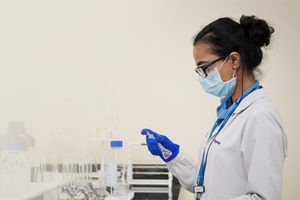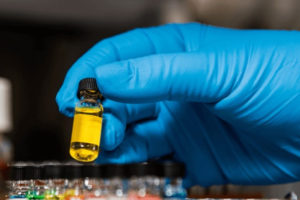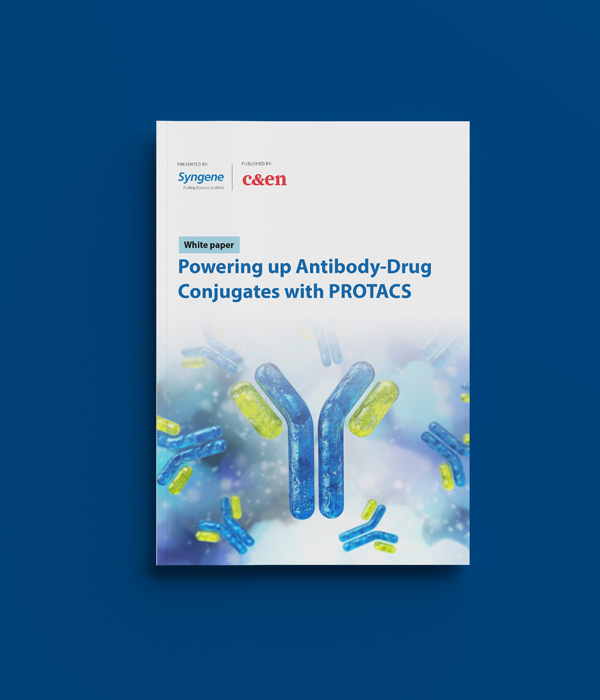Introduction
The biopharmaceutical industry has been a hotbed of innovation in recent years, with an increasing number of novel recombinant protein therapeutics receiving the U.S. Food and Drug Administration’s (FDA) green light. However, these therapies are often very expensive, highlighting the ever-growing need for improved efficiency and productivity. One of the key levers in enhancing productivity is the cell line and the upstream processing which drive the quantity of product made while all subsequent downstream steps enhance the quality of the product.
Despite the remarkable advancements fuelled by the development of recombinant technologies, innovative media formulations, and precise process control strategies, hurdles persist, particularly for startups and small biopharma teams. Equipment availability and varying quality of consumables often create bottlenecks, slowing down progress and adding complexities to the upstream process.
Recognizing these challenges, the biopharmaceutical industry has begun to embrace integrated upstream platforms as a promising answer. These platforms help streamline upstream process development, boost productivity, and expedite the development and delivery of novel biologics.
A focus on next-generation cell line development is paramount, given its role in biopharmaceutical production. Chinese hamster ovary (CHO) cells, known for their ability to produce recombinant glycoproteins with human-like post-translational modifications, are the preferred expression system for biologics. However, the process of generating high-producing clones is often laborious and time-consuming. The use of transposon-based integration has emerged as a potential solution to this problem, enabling rapid cell line development and yielding higher amounts of recombinant proteins. Coupling the clone selection process at an early stage to a robust upstream platform results in picking the clones most suitable for higher scale manufacturing and productivity.
The integration of Design of Experiments (DoE) and Process Analytical Technology (PAT) within the Quality by Design (QbD) framework further enhances the effectiveness of upstream platforms. This approach enables real-time monitoring and analysis of critical quality attributes. By utilizing tools like a Raman Analyzer, biopharmaceutical companies can maintain steady nutrient levels in bioreactors, optimizing process control and efficiency.
Ensuring safety, quality, and regulatory compliance is key to biologics production and a well understood cell line plus upstream platform reduces any risk of not meeting the compliance expectations. By integrating upstream platforms and adopting disruptive concepts, biopharma companies can dramatically compress the traditional drug development timelines. This leads to faster entry into clinical studies, quicker progression from cell line development to production, and overall improved productivity.
The integration of upstream platforms represents a paradigm shift in biopharmaceutical development, offering a pathway to accelerated innovation, enhanced productivity, and improved regulatory compliance. Forward-thinking biopharma companies leveraging automation, advanced analytics, and QbD principles can navigate the complexities of cell line development more efficiently, bring novel therapeutics to market quicker and better address critical healthcare needs
Introduction
The biopharmaceutical industry has been a hotbed of innovation in recent years, with an increasing number of novel recombinant protein therapeutics receiving the U.S. Food and Drug Administration’s (FDA) green light. However, these therapies are often very expensive, highlighting the ever-growing need for improved efficiency and productivity. One of the key levers in enhancing productivity is the cell line and the upstream processing which drive the quantity of product made while all subsequent downstream steps enhance the quality of the product.
Despite the remarkable advancements fuelled by the development of recombinant technologies, innovative media formulations, and precise process control strategies, hurdles persist, particularly for startups and small biopharma teams. Equipment availability and varying quality of consumables often create bottlenecks, slowing down progress and adding complexities to the upstream process.
Recognizing these challenges, the biopharmaceutical industry has begun to embrace integrated upstream platforms as a promising answer. These platforms help streamline upstream process development, boost productivity, and expedite the development and delivery of novel biologics.
A focus on next-generation cell line development is paramount, given its role in biopharmaceutical production. Chinese hamster ovary (CHO) cells, known for their ability to produce recombinant glycoproteins with human-like post-translational modifications, are the preferred expression system for biologics. However, the process of generating high-producing clones is often laborious and time-consuming. The use of transposon-based integration has emerged as a potential solution to this problem, enabling rapid cell line development and yielding higher amounts of recombinant proteins. Coupling the clone selection process at an early stage to a robust upstream platform results in picking the clones most suitable for higher scale manufacturing and productivity.
The integration of Design of Experiments (DoE) and Process Analytical Technology (PAT) within the Quality by Design (QbD) framework further enhances the effectiveness of upstream platforms. This approach enables real-time monitoring and analysis of critical quality attributes. By utilizing tools like a Raman Analyzer, biopharmaceutical companies can maintain steady nutrient levels in bioreactors, optimizing process control and efficiency.
Ensuring safety, quality, and regulatory compliance is key to biologics production and a well understood cell line plus upstream platform reduces any risk of not meeting the compliance expectations. By integrating upstream platforms and adopting disruptive concepts, biopharma companies can dramatically compress the traditional drug development timelines. This leads to faster entry into clinical studies, quicker progression from cell line development to production, and overall improved productivity.
The integration of upstream platforms represents a paradigm shift in biopharmaceutical development, offering a pathway to accelerated innovation, enhanced productivity, and improved regulatory compliance. Forward-thinking biopharma companies leveraging automation, advanced analytics, and QbD principles can navigate the complexities of cell line development more efficiently, bring novel therapeutics to market quicker and better address critical healthcare needs







